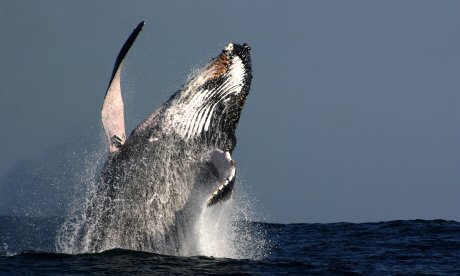
Mark Carwardine has a whale of a time in Mexico
Look at a map of North America and, down in the bottom left-hand corner, you will see a long stretch of land that looks rather like a giant chilli. This is Baja California – my favourite place for whale-watching and, at 1,300km, one of the longest peninsulas in the world.
The Pacific side of this ‘Mexican Galápagos’ is best known as the winter home of practically the entire world population of grey whales. Safely sheltered from the pounding surf of the open ocean, thousands of greys gather to socialise, mate and calve in a string of lagoons beside the desert.
But just a few miles away, to the east, there is an even more extraordinary world. The Sea of Cortez is a well-kept secret that tends to be overshadowed by its more famous neighbour. Both a breeding and feeding ground for great whales, the Sea is home to a greater variety of them than anywhere else in the world. Visiting the grey whale lagoons without venturing into the Sea of Cortez is like subscribing to Wanderlust and then only reading its cover.
I couldn’t cope without my annual pilgrimage to Baja. I’ve been a regular visitor for 17 years and have just returned from yet another two-week stint. As always, it was utterly breathtaking.
We saw grey, fin, humpback and sperm whales, to name a few. We spent many hours with blue whales – every whale-watcher’s dream – rolling right alongside the boat and blowing their phenomenal 10m spouts. And, as always, we were surrounded by literally thousands of dolphins.
But even dedicated whale addicts cannot fail to notice the other wildlife here. Dotted with islands harbouring huge numbers of magnificent frigatebirds, red-billed tropicbirds, blue-footed boobies and many other seabirds, the Sea of Cortez is also home to elephant trees, myriad cactuses, endemic Xantus’s hummingbirds, whale sharks, mobula rays (which leap out of the water like flying pancakes), rare Guadalupe fur seals. It even boasts the northernmost coral reef in the world.
Almost as much as its wildlife, though, the region is worth visiting for its tranquillity. Just imagine, sitting on a deserted beach listening to the sounds of the early evening: the crackling of a campfire, coyotes calling from the sand dunes, a cacophony of barks from distant sea lions and a whale’s thunderous blows from across the bay.